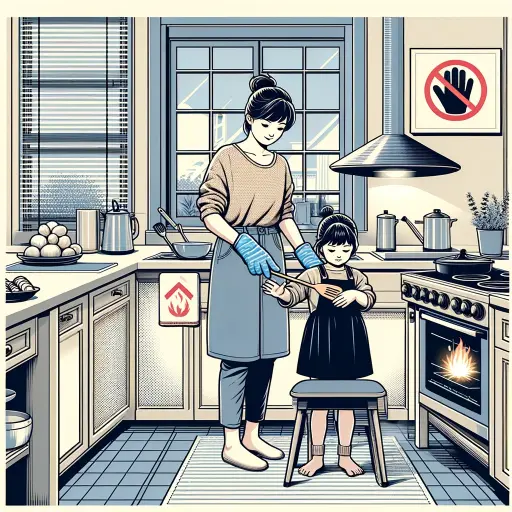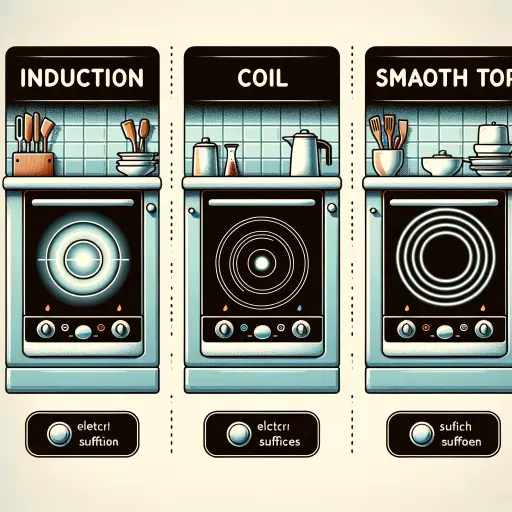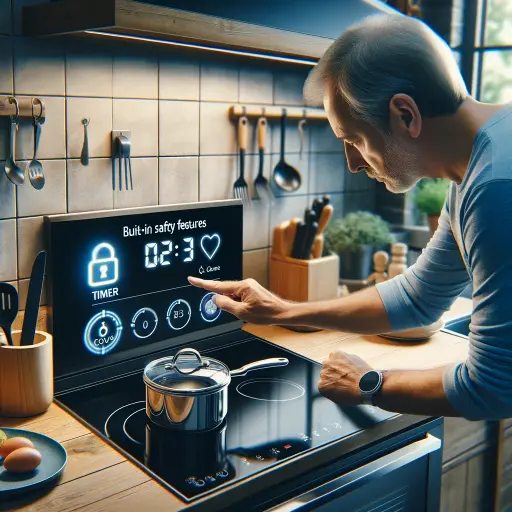“Cook Smart: 9 Electric Stove Safety Guidelines for Secure Cooking”
Updated: 27 Apr 2024
618
Every year, over 160,000 home fires start in the kitchen, accounting for nearly half of all home fires in the U.S., according to the National Fire Protection Association (NFPA). Many of these are preventable.
By following our expert tips, you can keep your kitchen safe. Are you using your electric stove safely? Check out our guide on “9 Essential Electric Stove Safety Guidelines” to learn how to cook safely while still having fun in the kitchen.
This blog is the perfect tool for anyone wanting to use their electric stove without worry. Whether you’re making pancakes for breakfast or cooking stew for dinner, our tips will help you cook confidently.
Get ready to improve your cooking skills and keep your kitchen a safe place for all your tasty meals. Let’s learn how to use your stove safely.

9 Essential Electric stove safety guidelines
Understanding Electric Stove Safety
How Electric Stoves Work:
Electric stoves are available in induction, coil, and smooth top models.
Induction stoves heat directly through electromagnetic fields, coil stoves use electrical resistance, and smooth tops offer a flat surface with underlying elements.
Click to learn Why Switch to Induction Stove.

Potential Risks:
Low-quality stoves may pose risks such as fire hazards from faulty wiring or damaged elements. Recognizing these risks is essential for safety.
Choosing the Right Electric Stove
Quality Over Cost:
Opt for high-quality electric stoves that, despite their higher price, come with better safety features and reliability.
Safety Features to Look For:
Essential features include automatic shut-off to prevent accidents, child locks to avoid unintended use, and residual heat indicators to warn of hot surfaces.

Installation and Setup
Installation:
Have your stove professionally installed to avoid common hazards like electrical issues.

Environment for Installation:
Ensure good ventilation and keep flammable materials away from the stove to enhance safety.
Proper kitchen layout and installation considerations are crucial for preventing accidents.
Advanced Safety Technologies
Introduction to Induction Cooking:
Induction technology not only speeds up cooking times but significantly enhances safety and efficiency.
This method heats the cookware directly through electromagnetic fields, which means the stove itself doesn’t get as hot, reducing burn risks.

Innovations in Electric Stove Safety:
The latest advancements in electric stove technologies have focused on preventing accidents.
Features like auto-shutoff sensors, which turn off the stove if no pan is detected, and alerts for overheating, are crucial developments in electric stove safety techniques.
Additional features include smart technology integration that allows stoves to interact with connected devices, providing automated alerts and adjustments based on real-time cooking conditions, such as syncing with your smoke detector to automatically shut down if smoke levels rise.
Daily Usage and Maintenance
Preventive Measures for Daily Use:
Utilizing built-in safety features such as timers and child locks can greatly enhance the safety of your kitchen.
These features help manage cooking times and prevent accidental stove turn-ons, which are essential parts of electric stove safety techniques.
Routine Maintenance Tips:
Keeping your stove in optimal condition involves regular cleaning and checking for any signs of wear or damage.
This can help prevent issues like electrical fires, ensuring your stove remains safe and functional.

Dealing with Emergencies
Steps to Take in Case of an Electric Stove Fire:
Knowing how to react if your electric stove catches fire is critical. Always have a fire extinguisher suitable for electrical fires at hand, and learn how to use it safely and effectively.
Familiarize yourself with the class of your fire extinguisher—most kitchen fires will require a Class K extinguisher designed specifically for grease and cooking fires.

Extended Response for Malfunctions:
In case of electrical faults, it’s important to know how to cut off power and whom to contact for repairs. Regular checks by a professional can preempt many issues.
Additional steps include isolating the area, avoiding water to extinguish electrical fires, and using baking soda for small grease fires.
It’s crucial to maintain a clear escape route from the kitchen and teach all household members to use the main electrical panel to shut off power in an emergency.
Optimal Kitchen Layout
Designing for Safety and Efficiency:
Creating an optimal layout for your kitchen involves strategic placement of the stove, refrigerator, and sink to maximize efficiency and minimize hazards. Ensure there is adequate space around the stove to operate safely without the risk of accidental burns or fires.
Enhancing Safety Using Smart Devices
Integrating Technology for Kitchen Safety:
Utilize smart kitchen devices such as smart smoke detectors, Wi-Fi enabled fire alarms, and stove safety sensors that can notify you of dangers and shut down operations if a risk is detected. These technologies provide an extra layer of safety.
Legal and Insurance Considerations
Compliance with Safety Standards:
Adhering to local safety regulations and standards is a fundamental part of electric stove safety techniques. Ensuring your stove meets these standards can protect you legally and enhance safety.
Insurance Coverage for Electric Stoves:
Having the right home insurance can mitigate financial losses from stove accidents. Discussing this with your insurance provider.
Conclusion
Throughout our discussion on electric stove safety: 9 safety guidelines, we’ve delved into several essential aspects that ensure a secure cooking environment.
From embracing the advanced safety features of induction cooking to emphasizing the significance of routine maintenance, these practices are critical in reducing risks associated with electric stoves.
Additionally, we’ve highlighted the importance of being prepared for emergencies and understanding legal and insurance aspects related to electric stove use.
Applying these electric stove safety guidelines consistently is not just about accident prevention; it’s about creating a safe, enjoyable cooking experience for everyone involved.
By staying informed and proactive, you can ensure that your kitchen remains a safe space where culinary creativity can thrive. Remember, safety is a continuous commitment—integrate these practices into your daily kitchen routines to protect yourself, your family, and your home.
FAQs
What should I do if my electric stove catches fire?
Use a Class K fire extinguisher designed for grease and cooking fires, and ensure you know how to operate it effectively.
Is it safe to leave pots unattended on the stove?
Never leave cooking food unattended. Unsupervised cooking is a leading cause of kitchen fires. If you must leave the kitchen, even for a short period, turn off the stove.
Can I use aluminum foil on an electric stove?
Avoid using aluminum foil to line the drip pans of electric stoves as it can restrict airflow and cause overheating. Instead, clean drip pans regularly to maintain their efficiency and safety.
What kind of cookware is safest to use on an electric stove?
Use flat-bottomed pots and pans to ensure even heat distribution and to reduce the risk of tipping over. Avoid using metal utensils on non-stick cookware to prevent scratching and potential health hazards.
Please Write Your Comments